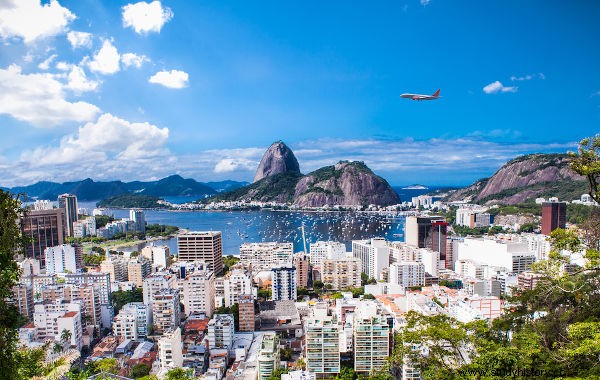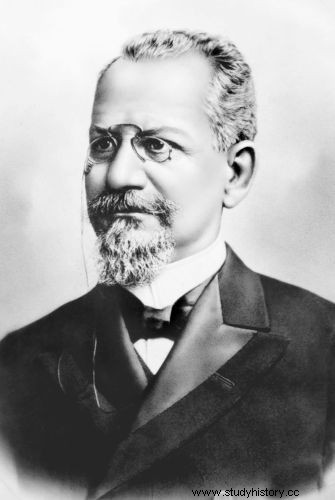The Vaccine Revolt was a popular uprising that began in Rio de Janeiro , on November 10, 1904 , being caused by popular dissatisfaction due to a mandatory vaccination campaign against smallpox conducted by public health worker Oswaldo Cruz. The revolt caused the death of 30 people and great material destruction in the then capital of Brazil.
Access also :Five diseases that marked the history of humanity
Context:Rio de Janeiro at the beginning of the 20th century
At the beginning of the 20th century, Rio de Janeiro was the largest Brazilian city , with a population of about 800 thousand inhabitants . The urban growth of this city happened in a fast and disorderly way, and the sanitary issue soon became an urgent problem for the capital of Brazil, since diseases killed the population and scared the foreigners.

From the second half of the 19th century, the growth Rio de Janeiro's lack of planning and the large flow of people passing through the city — which had one of the most important ports in Brazil — allowed a series of epidemics to emerge . Diseases such as yellow fever, smallpox, cholera, bubonic plague, among others, caused regular epidemic outbreaks in the city.
Researcher Jaime Larry Benchimol says that Rio de Janeiro had yellow fever outbreaks that caused the death of thousands of people in 1849, 1850, 1873, 1876, 1891, and the problem continued into the 20th century|1| . Between 1849 and 1850, for example, it is estimated that nearly 91,000 people contracted yellow fever in the city. The other diseases mentioned also caused major epidemics in Rio de Janeiro.
Several medical theories developed in the 19th century about the reasons that explained the number of epidemics in Rio de Janeiro, and this was incorporated by the mentality of the elites. In general, there was talk of the morbid gases expelled by the swamps on the outskirts of the city and the difficulty of penetration of the sun and the wind due to the geography of Rio de Janeiro, as well as the precarious housing of the poor who lived in the center of the city.
The proposal to resolve this was to promote structural reforms in downtown Rio de Janeiro , demolishing buildings and widening the avenues of that place. Furthermore, the poor should be removed from there, since, it was argued at the time, the “bad customs” of this class contributed to the spread of diseases.
-
Reforma Pereira Passos
It was with this type of proposal on the reform of Rio de Janeiro that Rodrigues Alves he was elected president of Brazil l. He was in office between 1902 and 1906 and it was during his government that a gigantic reform was carried out in the central areas of Rio de Janeiro. To implement the reform, Rodrigues Alves forwarded the project to Francisco Pereira Passos, the city's mayor.
In this reform thousands of the poor were displaced of their homes and it is estimated that around 700 buildings were destroyed. New buildings and wide avenues were built in the capital. The poor who lived there were forced to live in remote areas or they began to live on the hills that surrounded Rio de Janeiro.
Modernization also affected the middle classes, such as merchants, and even cultural manifestations, which began to suffer from police repression. Along with this modernization process, sanitary actions were carried out in the urban territory , under the leadership of the sanitarian Oswaldo Cross , with the objective of eradicating the diseases that so affected Rio de Janeiro.
Some historians suggest that the violence and authoritarianism with which reforms were carried out in the city served as the motivation for the revolt in 1904, but there are historians who suggest that the Vaccine Revolt is directly linked with the vaccination campaign and the way it was conducted.
Also read :Revolt of the Whip — the riot caused by the dissatisfaction of sailors with the physical punishment they suffered
Oswaldo Cruz and the sanitary campaign
In June 1904, Rodrigues Alves proposed that a law be formulated to make vaccination mandatory throughout the city of Rio de Janeiro. Vaccination targeted smallpox, one of the most punishing diseases in the capital. During his tenure, Oswaldo Cruz also committed to fighting yellow fever and the bubonic plague.

Before the mandatory vaccination project, brigades were formed to eliminate all foci that allowed Stegomyia fasciata , currently known as Aedes aegypti , reproduce. Known as mosquito swatter , these brigades spread across Rio de Janeiro, looking for outbreaks, and acted in an authoritarian manner, invading homes and indicating renovations, interdictions and even demolitions.
The violence of this process, of course, displeased the population. In the case of the bubonic plague, authorities sought to eradicate rats and fleas from the city. Even so, there were actions that forced residents to carry out renovations in their homes. Another proposed action was to encourage the population to hunt rats through payments to those who took these rats to the health teams. This served as an incentive for many to build mouse breeders to ensure extra income.
On the issue of smallpox, as mentioned, Oswaldo Cruz and the government proposed mandatory vaccination, a proposal approved on October 31, 1904 . This situation worried a part of the population of Rio de Janeiro. In this context, news leaked out that the government was going to propose a law that would create more limitations for those who did not get vaccinated and that's where it all started.
Beginning of the revolt
This news was leaked on November 9 through the press, but the population's dissatisfaction with mandatory vaccination had been present since June, so much so that on November 5 a League Against Mandatory Vaccination in Rio de Janeiro.
The historian José Murilo de Carvalho suggests that such popular revolt with vaccination is related to moral values of the early 20th century. These values can be related to the humiliation caused in a family head by the invasion of his home and the fear that vaccination could dishonor women, as rumors of the time suggested inoculation of the vaccine in the thighs and buttocks|2| .
In any case, the leak of the proposed new law for Rio de Janeiro infuriated the population and a riot broke out in the city streets. The first riot was recorded on November 10, in Largo do São Francisco, and extended to Praça Tiradentes. José Murilo de Carvalho says that the first cries of “Down with the vaccine! were heard in the square ”|3| .
Protests ensued in the following days, and on the 13th, they became massive. There were robberies against places such as police stations and barracks, in addition to the destruction of trams, the formation of barricades and the destruction of other buildings throughout the city. Fights against the police were violent, with fire exchange and the Cobblestone Launch against the cops.
The protests were concentrated in two districts of Rio de Janeiro:Sacramento and Health . Police and army troops were mobilized to contain the population and even soldiers from other states were called in to help repress the population. During the popular demonstration, there was also a attempted coup of soldiers dissatisfied with the government and there was also mobilization of workers. President Rodrigues Alves considered fleeing from Rio de Janeiro.
Login also :Consequences of the Spanish Flu in Brazil
Outcome
On the 16th of November, a state of siege was declared and, from then on, the popular and workers' revolt lost strength. The last repressive actions took place on November 23. The balance of the Vaccine Revolt was 30 dead , 110 injured and the deportation of 461 people to Acre , in addition to a lot of material destruction in the city|4| . Despite everything, the vaccination campaign managed to eradicate smallpox from Rio de Janeiro.
Notes
|1| BENCHIMOL, Jaime Larry. Urban reform and Vaccine Revolt in the city of Rio de Janeiro. In.:FERREIRA, Jorge and DELGADO, Lucilia de Almeida Neves (eds.). Republican Brazil:the time of oligarchic liberalism:from the Proclamation of the Republic to the Revolution of 1930. Rio de Janeiro:Civilização Brasileira, 2018, p. 215-272.
|2| CARVALHO, José Murilo de. The people against the vaccine. In.:FIGUEIREDO, Luciano (org.). History of Brazil for the Occupied. Rio de Janeiro:House of the Word, 2013, p. 357-58
|2| Ditto, p. 353.
|3| Ditto, p. 355.
Image credits
[1] Presidents Gallery
